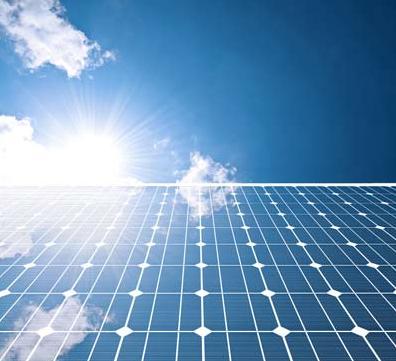 With overseas demand continuing to be sluggish, solar panels have fallen into a situation of overproduction. China will use the renewable energy power generation full-scale acquisition system to arouse domestic demand.
With overseas demand continuing to be sluggish, solar panels have fallen into a situation of overproduction. China will use the renewable energy power generation full-scale acquisition system to arouse domestic demand. China's solar photovoltaic power generation industry relies more on overseas markets. Imported core materials and components required for the production of solar photovoltaic cells, and exported solar cells and modules made from Japan, the United States, and Europe.
Since 2006, China's solar photovoltaic power generation industry has increased its investment and its production capacity has expanded rapidly. However, due to the impact of the Lehman crisis and the European financial crisis, overseas demand has fallen into a downturn. On the other hand, trade frictions have also arisen with the United States and Germany in the export of solar photovoltaic panels. The US Department of Commerce initially decided to impose a tariff of more than 30% on Chinese-made solar panels.
Since 2011, the prices of modules and polysilicon solar cells have rapidly declined, and more than 300 SMEs in China have gone bankrupt. Faced with this situation, the Chinese government has formulated new policies.
In the “12th Five-Year Plan for Renewable Energy Development†announced in August 2012, the target for setting the installed capacity of solar power generation equipment from the current 5 million kilowatts to 20 million kilowatts by 2015 is set. As a demonstration business, large-scale solar power plants will be built in Inner Mongolia Autonomous Region, Gansu Province, Xinjiang Uygur Autonomous Region, Qinghai Province and Ningxia Hui Autonomous Region, where sunshine is abundant. On the other hand, in order to promote the popularization of decentralized solar power generation equipment in urban areas, incentive policies will be implemented for small-scale solar power generation in cities in economically developed regions.
The biggest issue is the purchase price of grid-connected and generated electricity. The "Distributed Power Generation Management Measures" and "Network Management Measures" currently being formulated will clearly specify the responsibilities of the government and power supply companies. It is expected that priority will be given to the acceptance of power generation stations using renewable energy, and preferential prices will be adopted.
The government’s policy is to implement a quota system that requires power supply companies and power generation companies to use a certain amount of renewable energy. It is stipulated that power companies must purchase a certain percentage of the electricity generated by renewable energy when they purchase electricity; power generation companies must use renewable energy to generate electricity at a certain percentage.
In addition, the State Council executive meeting held in May 2012 decided to provide incentives for installation of solar photovoltaic power generation equipment in public facilities and residences. The National Energy Administration plans to formulate relevant rules.
Solar photovoltaic power generation business is closely related to policies. Prior to this, Chinese solar panels were able to export to Japan, the United States, and Europe in large quantities. To a large extent, they used the policy of the exporting country. It is indispensable for China to change from a solar panel producing country to a solar power generating country. Establishing a full-scale guaranteed acquisition system and providing subsidies and other related promotion measures are essential.
Solar Controller,Solar Charging Controller,Solar Water Heater Controller,Automatic Switch Solar Controller
GuangZhou HanFong New Energy Technology Co. , Ltd. , https://www.gzinverter.com